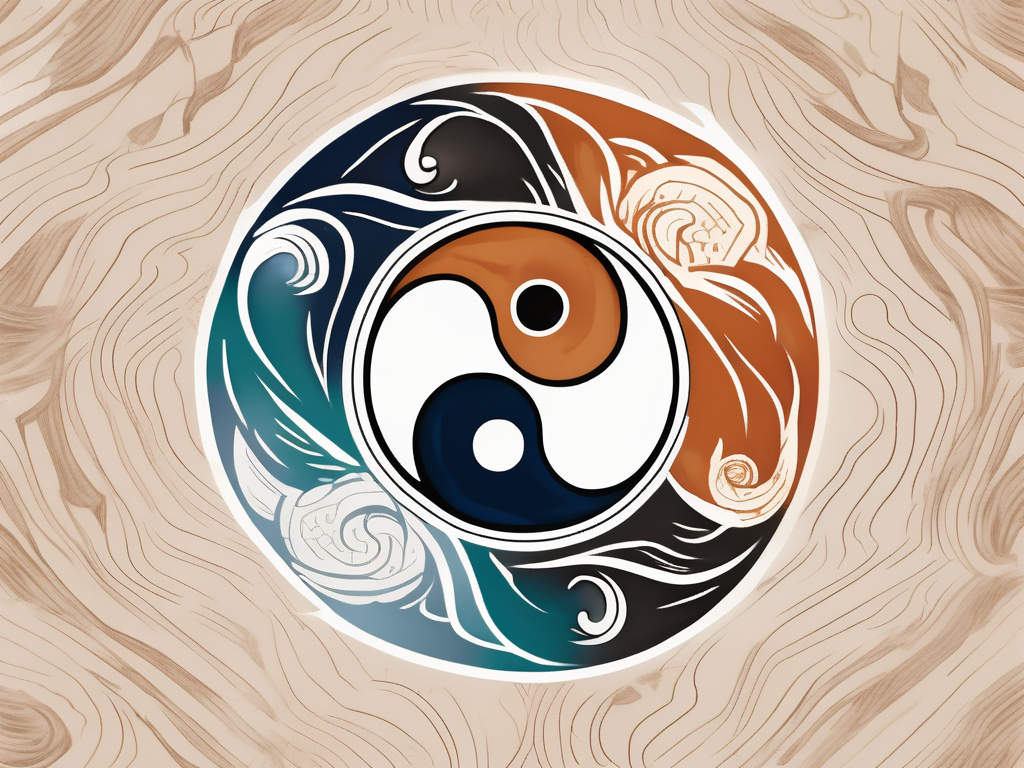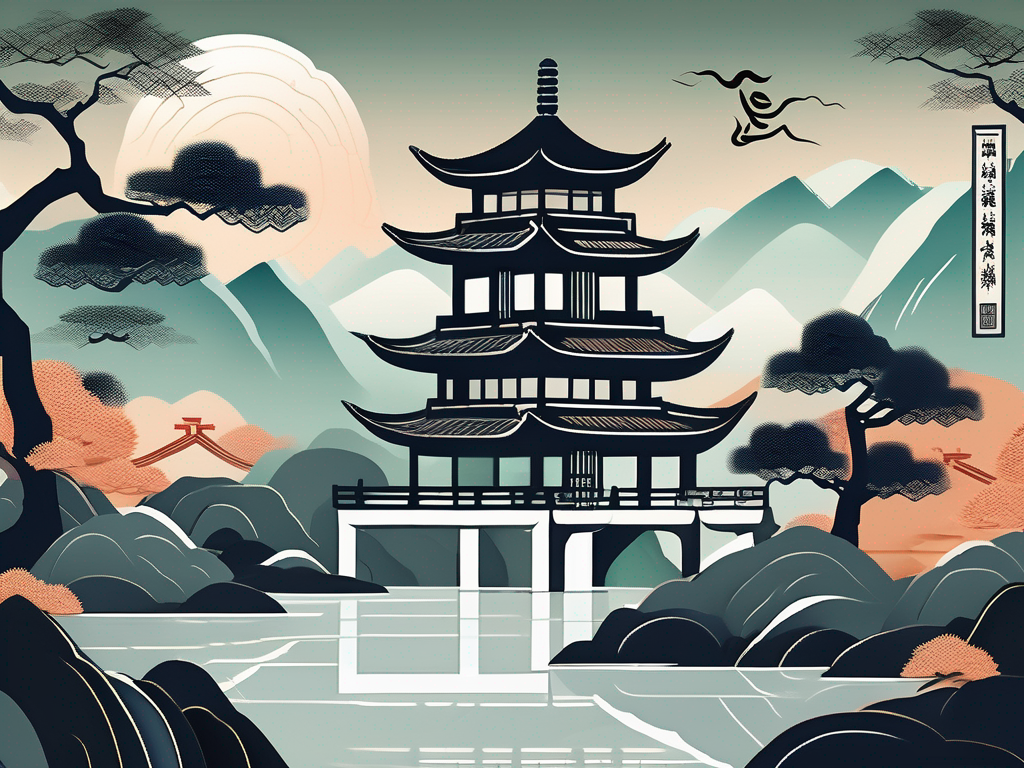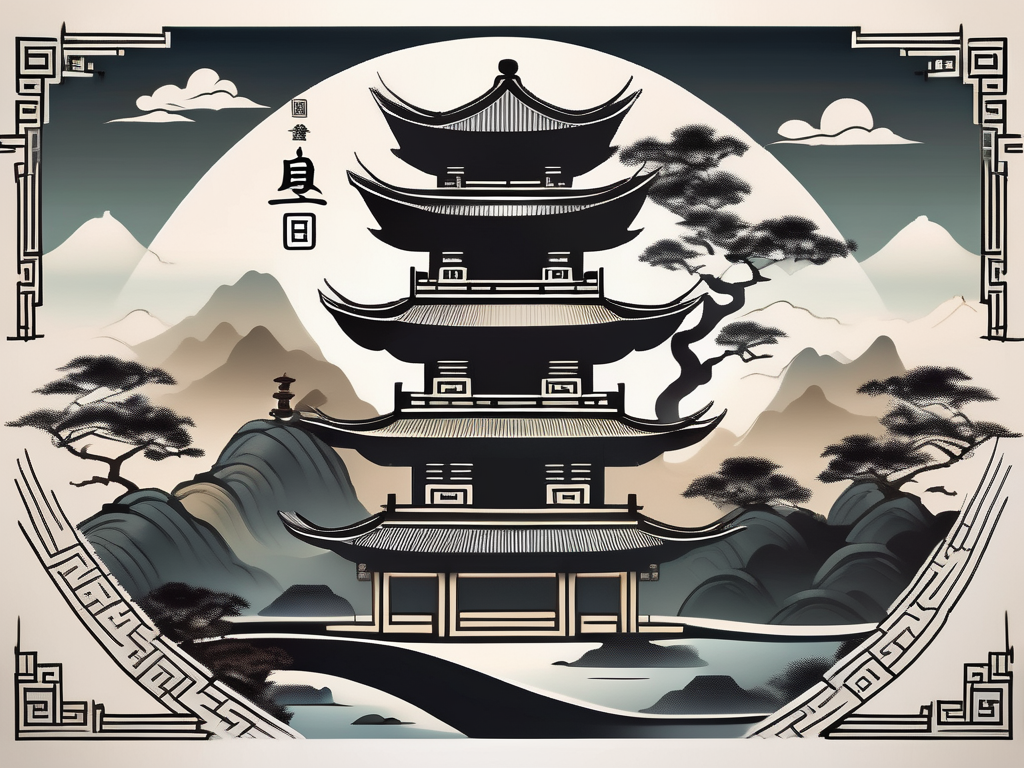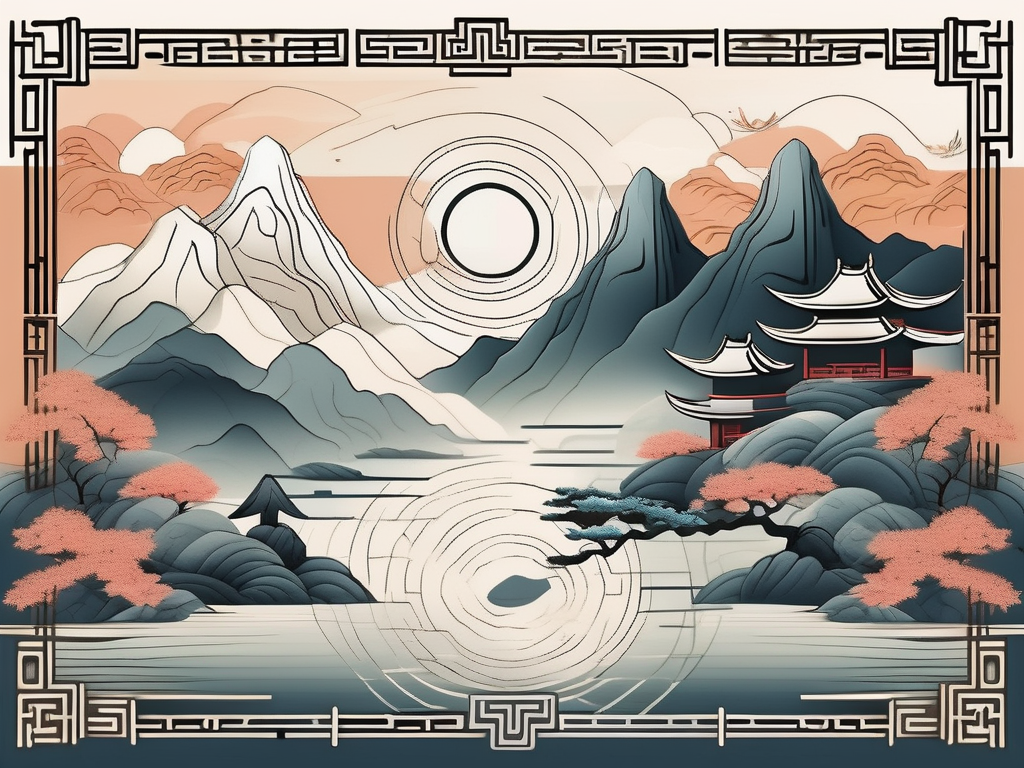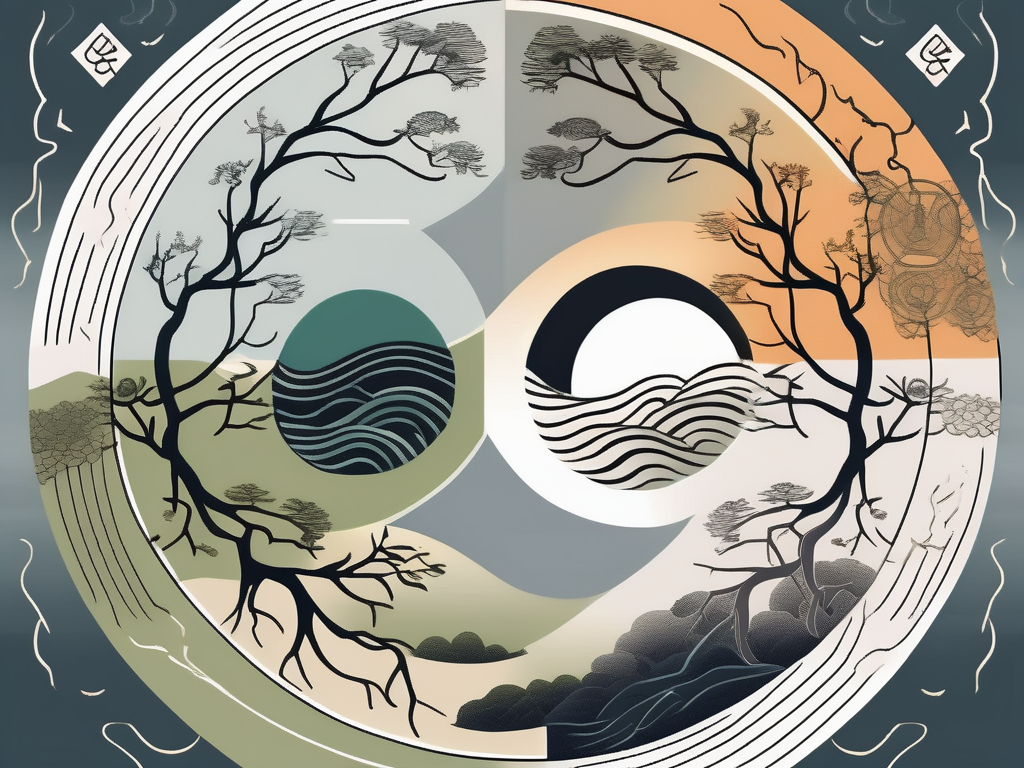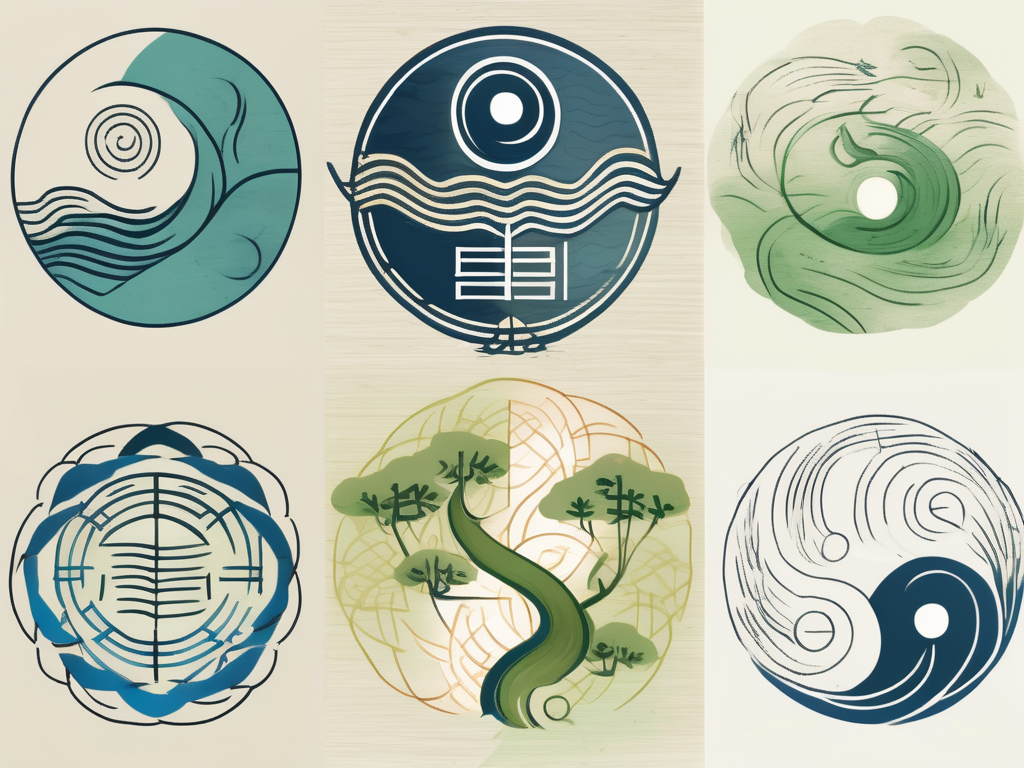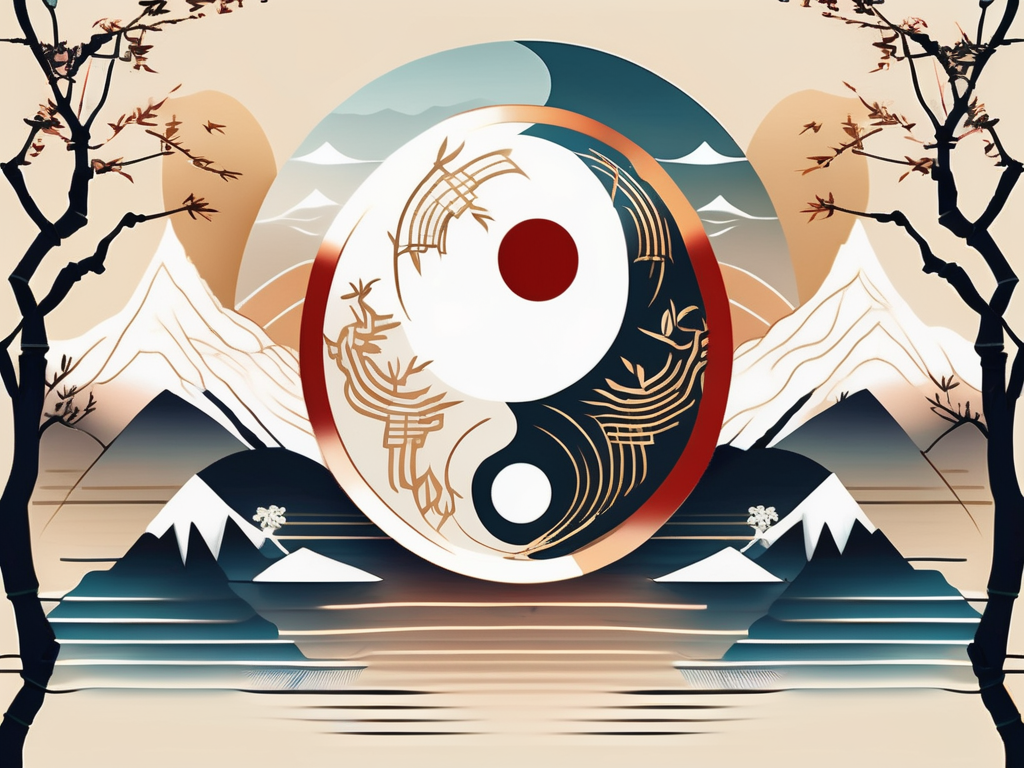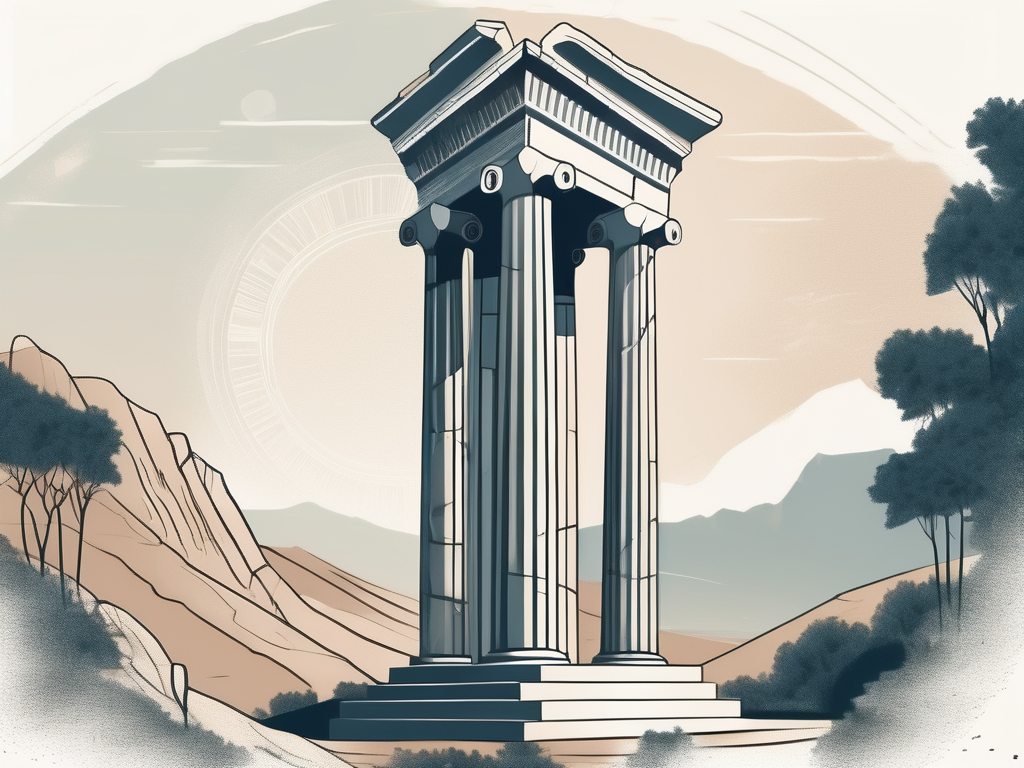In the quest for wisdom and guidance, humans have turned to various philosophical traditions throughout history. Two prominent ancient philosophies that have captured the minds and hearts of many are Taoism and Stoicism. On the surface, they may seem like contrasting belief systems, but a deeper exploration reveals intriguing similarities and thought-provoking differences. Let’s embark on a journey to understand the core principles of Taoism and Stoicism, compare their perspectives, explore their practical applications, and examine their relevance in today’s world.
Understanding the Core Principles of Taoism
Taoism, an ancient Chinese philosophy, offers profound insights into the nature of reality and the path to harmonious living. At its core, Taoism draws inspiration from the teachings of the legendary sage, Lao Tzu. According to legend, Lao Tzu wrote the Tao Te Ching, a book filled with wisdom and guidance.
The origins of Taoism can be traced back to ancient China, where it emerged as a response to the societal and philosophical questions of the time. Lao Tzu’s teachings emphasized the concept of the Tao, which can be understood as the way of nature. Taoism encourages individuals to align themselves with the natural flow of life and cultivate a sense of balance and harmony with the world around them.
The Origins of Taoism
Uncovering the origins of Taoism reveals a rich history deeply rooted in Chinese culture. Lao Tzu, often regarded as the founder of Taoism, lived during a time of great social and political turmoil. Frustrated with the chaos and corruption of the society he witnessed, Lao Tzu sought to find a way to restore harmony and peace.
Legend has it that Lao Tzu, disillusioned with the state of the world, decided to leave civilization behind and venture into the mountains. It was during this journey that he encountered a guardian of the pass, who recognized his wisdom and urged him to write down his teachings. The result was the Tao Te Ching, a profound text that continues to inspire and guide individuals to this day.
The Tao Te Ching is filled with poetic verses that explore the nature of reality, the importance of simplicity, and the path to inner peace. It offers insights into the power of letting go, embracing spontaneity, and finding harmony in the midst of chaos.
Key Teachings and Beliefs of Taoism
Taoism encompasses a range of beliefs and practices, but some core teachings stand out. One of the fundamental principles of Taoism is the importance of simplicity. Taoists believe that by simplifying one’s life and letting go of unnecessary desires and attachments, one can achieve a state of inner peace and contentment.
Another key teaching of Taoism is the concept of wu-wei, which can be loosely translated as “effortless action.” Taoists believe in the power of non-action, of allowing things to unfold naturally without trying to control or manipulate them. By surrendering the desire for control, individuals can align themselves with the natural flow of life and find harmony.
Taoism values individual freedom and non-interference. Unlike some other philosophies or religions, Taoism does not impose strict dogma or rigid rules. Instead, it encourages personal reflection and introspection, allowing individuals to find their own path to enlightenment.
Taoism’s Influence on Culture and Society
Taoism’s deep roots in Chinese culture have had a significant impact on various aspects of society. One area where Taoism has left its mark is traditional Chinese medicine. Taoist principles, such as the belief in the interconnectedness of mind, body, and spirit, have shaped the foundations of this holistic approach to health and well-being.
Martial arts, another field influenced by Taoism, often incorporates Taoist philosophy and principles. Many martial arts practitioners seek to cultivate a sense of balance, harmony, and discipline in their practice, reflecting the core tenets of Taoism.
Feng shui, the ancient Chinese practice of arranging one’s environment to create harmony and balance, also draws inspiration from Taoist principles. The concept of yin and yang, representing complementary forces in the universe, is a fundamental aspect of feng shui and has become widely recognized and applied in various cultures around the world.
Furthermore, Taoism’s emphasis on inner peace and balance has resonated with many individuals seeking tranquility amidst the chaos of modern life. The philosophy encourages embracing natural cycles, finding joy in simplicity, and letting go of attachments. As a result, Taoism has become appealing to those seeking spiritual fulfillment and a deeper connection with themselves and the world around them.
Delving into the Stoic Philosophy
Welcome to the world of Stoicism, a philosophy that has captivated the minds of thinkers throughout history. Let us embark on a journey back to ancient Greece in the 3rd century BCE, where the seeds of Stoicism were first planted by the teachings of Zeno of Citium. From there, this philosophy flourished, leaving an indelible mark on the world.
The Birth of Stoicism
Stoicism, with its roots firmly planted in ancient Greece, emerged as a response to the tumultuous times of the Hellenistic period. Zeno of Citium, a philosopher of great wisdom, laid the foundation for this philosophy, which would later be expanded upon by influential thinkers such as Epictetus, Seneca, and Marcus Aurelius.
As the teachings of Stoicism spread, it became a guiding light for individuals seeking inner strength and resilience. The Stoics believed in the power of virtue, rationality, and the acceptance of things beyond our control. By embracing these principles, they sought to cultivate a sense of tranquility and contentment in the face of life’s challenges.
Fundamental Concepts and Ideas in Stoicism
At the heart of Stoicism lies a profound understanding of the human condition. Central to this philosophy is the belief that true happiness, known as eudaimonia, can be achieved by focusing on the development of virtue. Stoics emphasized the importance of wisdom, courage, justice, and temperance as the pillars of a virtuous life.
One of the key concepts in Stoicism is the dichotomy of control. Stoics recognized that there are things within our control, such as our thoughts and character, and things that lie beyond our control, such as external events and other people’s opinions. By understanding this distinction, Stoics sought to free themselves from the anxieties and frustrations that arise from trying to control the uncontrollable.
The Impact of Stoicism on Western Thought
The influence of Stoicism on Western thought cannot be overstated. From the ancient Roman Emperor Marcus Aurelius, who found solace and guidance in Stoic principles, to modern-day advocates like philosopher Alain de Botton, Stoicism has left an indelible mark on the minds of thinkers throughout history.
Stoicism’s emphasis on reason, acceptance, and resilience resonates with those who seek personal growth and a means of navigating the complexities of life. It offers a framework for managing emotions, embracing the impermanence of the world, and finding inner tranquility amidst the uncertainties of existence.
Through the ages, Stoicism has provided individuals with a roadmap for living a virtuous and fulfilling life. Its teachings continue to inspire and guide those who seek to cultivate inner strength and find meaning in a world that often seems chaotic and unpredictable.
So, as we delve deeper into the realm of Stoicism, let us open our minds to the wisdom it offers and explore the profound insights that have shaped the course of human thought.
Comparing Taoism and Stoicism
Taoism and Stoicism are two philosophical traditions that, despite arising from different cultural backgrounds, share intriguing similarities and contrasting views. By exploring these philosophies, we can gain a deeper understanding of their teachings and how they shape our approach to life.
Similarities Between Taoism and Stoicism
Both Taoism and Stoicism prioritize the pursuit of inner peace, self-mastery, and the acceptance of life’s uncertainties. They invite individuals to detach themselves from external desires and societal expectations, encouraging them to turn their focus inward. In doing so, one can cultivate a sense of tranquility and contentment that transcends the ever-changing external world.
Furthermore, both Taoism and Stoicism place great importance on living in harmony with nature. They recognize that humans are an integral part of the natural world and that aligning oneself with its rhythms and cycles can lead to a more fulfilling existence. By embracing the transitory nature of life, individuals can find solace in the impermanence of all things, allowing them to appreciate the present moment.
Contrasting Views in Taoism and Stoicism
While Taoism and Stoicism share common ground, they also diverge in several aspects, offering unique perspectives on how to navigate life’s challenges.
Taoism emphasizes the importance of spontaneity and effortless action. It encourages individuals to let go of rigid plans and expectations, instead trusting in the natural flow of the universe. By surrendering to the interconnectedness of all things, one can find their place within the larger cosmic order, experiencing a sense of harmony and balance.
On the other hand, Stoicism values reason and rationality as key principles in guiding one’s actions. It emphasizes the importance of cultivating inner strength and resilience through self-discipline and the development of virtue. Stoics believe that by aligning one’s thoughts and actions with reason, individuals can navigate life’s challenges with wisdom and equanimity.
While these contrasting views may seem divergent, they both offer valuable insights into the human experience. Taoism encourages individuals to embrace the natural ebb and flow of life, finding peace in surrender, while Stoicism promotes the cultivation of inner strength and rationality, enabling individuals to face adversity with resilience.
By exploring the similarities and differences between Taoism and Stoicism, we can gain a broader perspective on the human quest for meaning and fulfillment. Both philosophies offer profound wisdom and guidance, inviting us to reflect on our own lives and discover our unique path towards inner peace and self-mastery.
Practical Applications of Taoism and Stoicism
Taoism in Everyday Life
Incorporating Taoist principles into daily life can bring about a sense of peace and tranquility. By embracing simplicity, practicing mindfulness, and finding balance in all aspects of life, individuals can enhance their overall well-being. Taoism reminds us to let go of attachments, cultivate gratitude, and appreciate the beauty of the present moment.
When it comes to simplicity, Taoism encourages individuals to declutter their lives both physically and mentally. This could mean simplifying one’s living space, getting rid of unnecessary possessions, and focusing on what truly brings joy and meaning. By doing so, individuals can create an environment that promotes relaxation and clarity of mind.
Mindfulness is another important aspect of Taoism. It involves being fully present in the current moment, without judgment or attachment. Practicing mindfulness can help individuals become more aware of their thoughts, emotions, and sensations, allowing them to respond to situations with greater clarity and compassion.
Finding balance is a fundamental principle in Taoism. It emphasizes the importance of harmonizing opposing forces and embracing the natural rhythms of life. This could mean balancing work and leisure, rest and activity, and solitude and social interaction. By finding balance, individuals can avoid burnout and cultivate a sense of harmony in their lives.
Letting go of attachments is another key teaching in Taoism. It encourages individuals to detach themselves from material possessions, expectations, and desires. By doing so, individuals can free themselves from unnecessary burdens and find contentment in the present moment.
Cultivating gratitude is an essential practice in Taoism. It involves appreciating and acknowledging the blessings and beauty that surround us. By focusing on gratitude, individuals can shift their perspective towards positivity and develop a greater sense of contentment and fulfillment.
Stoicism as a Guide for Modern Living
Stoic practices can serve as a valuable guide for navigating the complexities of modern life. By adopting the Stoic mindset of focusing on what lies within our control and accepting the rest, individuals can cultivate resilience, reduce anxiety, and find contentment. Applying stoic principles in decision-making, managing adversity, and developing meaningful relationships can lead to a more fulfilling and purpose-driven life.
When it comes to decision-making, Stoicism teaches individuals to focus on what is within their control. This means considering their own values, priorities, and goals rather than being influenced by external factors or societal expectations. By making decisions based on their own principles, individuals can lead a more authentic and fulfilling life.
Managing adversity is another area where Stoicism can be applied. Stoic philosophy encourages individuals to accept and embrace the challenges and setbacks they encounter. By viewing adversity as an opportunity for growth and learning, individuals can develop resilience and find strength in the face of difficulties.
Developing meaningful relationships is an important aspect of Stoicism. It emphasizes the value of virtue and the importance of treating others with kindness, empathy, and respect. By cultivating virtuous qualities such as compassion, integrity, and patience, individuals can foster deep and meaningful connections with others, leading to a more fulfilling and harmonious social life.
Stoicism also teaches individuals to focus on the present moment and find contentment in what they already have. By practicing gratitude and appreciating the simple pleasures of life, individuals can cultivate a sense of fulfillment and reduce the desire for constant accumulation and consumption.
In conclusion, both Taoism and Stoicism offer practical applications for enhancing everyday life. By incorporating Taoist principles of simplicity, mindfulness, balance, letting go, and gratitude, individuals can find peace and tranquility. Similarly, by adopting the Stoic mindset of focusing on what is within our control, accepting adversity, developing meaningful relationships, and finding contentment in the present moment, individuals can navigate the complexities of modern life with resilience and purpose.
The Ongoing Relevance of Taoism and Stoicism
Taoism in the 21st Century
In today’s fast-paced and interconnected world, the teachings of Taoism continue to hold significance. Taoist practices, such as meditation and mindfulness, offer individuals an antidote to the stresses and demands of modern living. By embracing Taoist principles, individuals can cultivate inner peace, find meaning in simplicity, and regain a sense of balance.
Stoicism’s Resurgence in Contemporary Society
As society grapples with uncertainty and constant change, Stoicism has experienced a resurgence in popularity. Its focus on personal responsibility, stoic acceptance of external circumstances, and emphasis on self-improvement resonate with a new generation seeking guidance in navigating the complexities of life. Stoicism offers a roadmap to finding contentment amidst chaos and cultivating resilience in the face of adversity.
In conclusion, Taoism and Stoicism are two philosophies that, despite their differences, offer valuable insights into living a meaningful and fulfilling life. While Taoism emphasizes harmony with nature and surrender to the natural flow of the universe, Stoicism focuses on developing inner strength and resilience through reason and acceptance. Incorporating elements from both philosophies can empower individuals to navigate the challenges of the modern world, find tranquility amidst chaos, and cultivate a sense of purpose and contentment.


